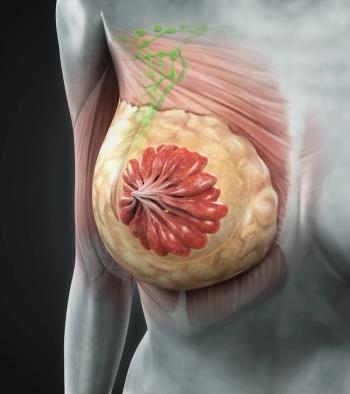
Oncology NEWS International
- Oncology NEWS International Vol 8 No 8
- Volume 8
- Issue 8
Four Pediatric Cancer Groups to Merge by 2000
CHICAGO-The new Children’s Oncology Group, which will include and replace four major pediatric cancer research groups, is expected to be up and running soon after the end of the year. The new cooperative group will include most researchers working on pediatric cancers and will initially comprise those currently associated with the Pediatric Oncology Group (POG), Children’s Cancer Group (CCG), National Wilms’ Tumor Study Group, and Intergroup Rhabdomyosarcoma Study Group.
CHICAGOThe new Childrens Oncology Group, which will include and replace four major pediatric cancer research groups, is expected to be up and running soon after the end of the year. The new cooperative group will include most researchers working on pediatric cancers and will initially comprise those currently associated with the Pediatric Oncology Group (POG), Childrens Cancer Group (CCG), National Wilms Tumor Study Group, and Intergroup Rhabdomyosarcoma Study Group.
Vita J. Land, MD, executive officer of POG, told ONI in an interview that the merger was a response to both internal and external pressures.
The urge to merge is partly the price of our success, Dr. Land said. The pediatric cancer cooperative trial groups have been widely admired for their ability to achieve full accrual and complete clinical trials in a timely manner. The cure rates in some pediatric cancers are now so high that quite large numbers of patients will be required for studies to show additional improvement with new therapies. These include acute lymphocytic leukemia, with a cure rate of 70% to 75%, and Wilms tumor, with a cure rate of 90%.
This problem has been addressed through international, intergroup studies, but Dr. Land said that a simpler collaborative process is needed, and merging the clinical trials groups would help achieve that goal.
The external pressure is pediatric researchers awareness of growing demands from Congress and various oversight bodies for greater efficiency in how clinical trials are conducted. A major recommendation has been that cooperative groups combine their administrative structures.
We realized that we should initiate this merger ourselves, based on good science, rather than waiting for others to recommend it, Dr. Land said. We had a window of opportunity to be proactive, and we had very strong collaboration with and support from the National Cancer Institute in doing so. We are designing our own systems and Clinical Trials Support Unit with the help of additional federal funding and industry support.
To help smooth the transition, for example, the NCI adjusted deadlines on a number of expiring grants and extended some so that it will be easier for the merged groups to handle the grant application process.
Savings in Time and Energy
Dr. Land expects the merger to achieve considerable savings in the time and energy that has been needed to run intergroup studies. Savings can be achieved by simplifying administrative procedures and the levels of approval needed. Also, the merger will eliminate the need to coordinate two or more operations offices, including monitoring patient registration at two operations offices and obtaining multiple institutional review board approvals.
Our mandate is to ensure that all children with cancer in Canada and the United States have access to the best treatment, either from or supervised by a member institution of the CCG or POG, Dr. Land said. We are currently deliberating on criteria for membership in the Childrens Oncology Group. We expect that in early 2000, all current POG and CCG institutions and researchers will be grandfathered in. Then, over the following 3 years, all 230 institutions will have to undergo the same review as new applicant institutions.
Among the criteria expected to be adopted by the Childrens Oncology Group to maintain membership are that a research team must see at least 12 new pediatric cancer cases per year and must register at least 50% of eligible patients on approved clinical trials, or a minimum of 35 patients, whichever is less.
Integrating the information systems of the four groups has been a major challenge. That task includes preserving and maintaining access to the extremely valuable information in each groups existing database. Dr. Land said that this work is being overseen by a transition committee that includes the chairs of all four groups.
Since the new group will include most of the pediatric oncology researchers in the United States and Canada, questions have arisen about who will be left to review grant proposals from Childrens Oncology Group researchers.
Dr. Land believes that peer review will not be a problem because grant proposals are already subjected to extensive internal peer review within all four current groups, and this process is expected to continue in the new cooperative group.
Articles in this issue
over 16 years ago
False positives frequent in CT lung cancer screening trialover 26 years ago
Stereotactic Core Biopsy Establishes Many Prognostic Factorsover 26 years ago
Breast Cancer Prevention With Tamoxifen Appears Cost-Effectiveover 26 years ago
NCI Discovers Gene Variations From Existing Databasesover 26 years ago
CPDR Unveils First Center Solely for Prostate Cancer Researchover 26 years ago
Going Beyond CHOP in Advanced Large-Cell Lymphomaover 26 years ago
Memorial Sloan-Kettering Opens Rockefeller Outpatient Pavilionover 26 years ago
Ernst Wynder, Pioneer in Preventive Medicineover 26 years ago
AHCPR Plans Health Care Market, Managed Care Research Centersover 26 years ago
NSAIDs May Protect Against Common GI CancersNewsletter
Stay up to date on recent advances in the multidisciplinary approach to cancer.





















































































